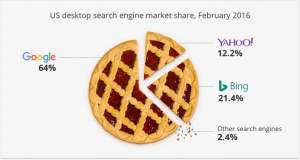
If you run an eCommerce business, you likely have a ton of customer data at your fingertips. And as we know, data is a marketer’s best tool.
Your existing customer data gives you a wealth of information about purchase patterns, helping you identify which customers are of the highest and lowest value to your business, which of your products sell best, what traits make for long-term or returning customers, and much, much more.
Which means that, for you as a marketer, this information is absolute gold.
A successful marketing strategy relies on smart segmentation. By understanding the types of customers that are most likely to generate the highest revenue for you, you’re able to focus your strategy around marketing to them in highly relevant, contextual ways, thereby increasing conversions and sales.
This smart segmentation comes into play in making every area of your marketing more relevant to your prospective customers. Your emails, ads, and landing pages will all benefit from being targeted toward specific segments of your audience, and there are plenty of creative ways to leverage your high-revenue customers.
By identifying patterns and trends in your customer data, you’ll be able to uncover insights that will allow you to make your audience targeting and your marketing efforts far more effective.
Look for Patterns in These 7 Customer Data Points
Ready to start leveraging your customer data to its fullest? Begin by analyzing your existing customers based on the following criteria. See if you can identify any patterns that correlate each category with the total revenue you generate per customer.
1. Number of Purchases
Break down your existing customers by the number of purchases they’ve made. What is the average number of purchases per customer? How does this metric compare to the total revenue per customer? In other words, are people who are making more purchases also making smaller purchases, leading to a lower total revenue as compared to folks who are making one or two large purchases?
2. Average Purchase Amount
Similar to the number-of-purchases data point, it’s important to look at the average purchase amount per customer. Which of your customers are high-spenders vs. low-spenders? What other data that you have about each of your customers correlates with higher average purchase amount?
Understanding what types of customers spend more on an average purchase will help you segment your list accordingly, and make sure you’re showing your big ticket items to the right folks.
3. Time Between Purchases
On top of understanding how many purchases your customers make and how much they spend on each one, it’s also valuable to take a look at the amount of time your customers are waiting between purchases.
This information will help you make smart decisions about the timing of your marketing efforts, such as your lead nurturing email campaigns and your retargeting ads.
Let’s say that customers who place multiple orders are most likely to place them all within a few weeks of each other. In that case, you’ll want to start showing them retargeting ads and sending them nurturing emails very quickly after that first conversion, to encourage them to come back and place another order.
However, if on the other hand, your customers are showing patterns of purchasing only once or twice in a given season, but tend to order again during that same season every year, you’ll likely want to time your marketing efforts to reflect that seasonality, or to encourage them to come back and order again earlier than they would otherwise.
Either way, understanding your customers’ purchase cycles can be very insightful.
4. Category of Item Purchased
If your business sells a number of different products, another useful categorization to use in looking for patterns is the type of product that your customers have purchased.
This will not only show you which product categories are most popular and profitable, but it’ll also help you identify other factors that correlate with purchases in certain categories.
In other words, are there certain demographics or behaviors that make a customer more likely to purchase an item from X category vs. Y category? For instance, perhaps an outdoor sporting goods company is more likely to sell fishing equipment to males in their 40s and 50s, but more likely to sell tennis rackets to females in their 20s and 30s. This company would of course want to leverage this insight in deciding which products to market to which audience segments.
While you might think you already know which categories sell best to which audience segments, it’s always important to confirm your theories with actual data. You might find that your suspicions are not always correct and you’ll have more success marketing certain products to a different audience!
5. Location
Among other demographics, take a look at the location of each of your customers. Do certain locations yield more customers, or perhaps higher-revenue customers?
Location is a major component of most audience targeting, especially in paid advertising campaigns, so understanding the best approach here could help you see major improvements in your results.
You might also consider running a location-specific campaign, or customizing a landing page based on location, to help increase relevance and pique the interest of your prospective customers even further.
6. Device Used for Purchase
In an era where nearly anything that can be done on desktop can also be done on mobile, you likely have a number of customers who are shopping and purchasing on their mobile devices or tablets.
Do you know what percentage of your purchases come from each device? Are orders that come from a certain device more or less profitable?
If you haven’t thought much about mobile yet, you might find that optimizing your checkout process for mobile, or targeting some of your ads to mobile users specifically, may have a drastic impact on your bottom line.
7. Source
If you have a strong tracking system in place, you should be able to tie every single customer back to the campaign or channel from which they found you.
Break out your customer data by Source and see if any particular channels yield more customers and/or higher-revenue customers. You might find, for example, that your social media channels produce a high volume of customers but they each have small purchase amounts, whereas your email marketing leads convert to much higher-paying customers.
Then, of course, you can focus your marketing efforts on the most profitable channels to increase your ROI even further.
These data points are a great place to start, but this list is by no means comprehensive! You should use any and all information that you have about your customers to identify useful trends, and apply those insights to your audience targeting to get the most out of your marketing.

What data trends have you found to be the most helpful for segmenting your audience? Let us know in the comments!
Digital & Social Articles on Business 2 Community
(115)





